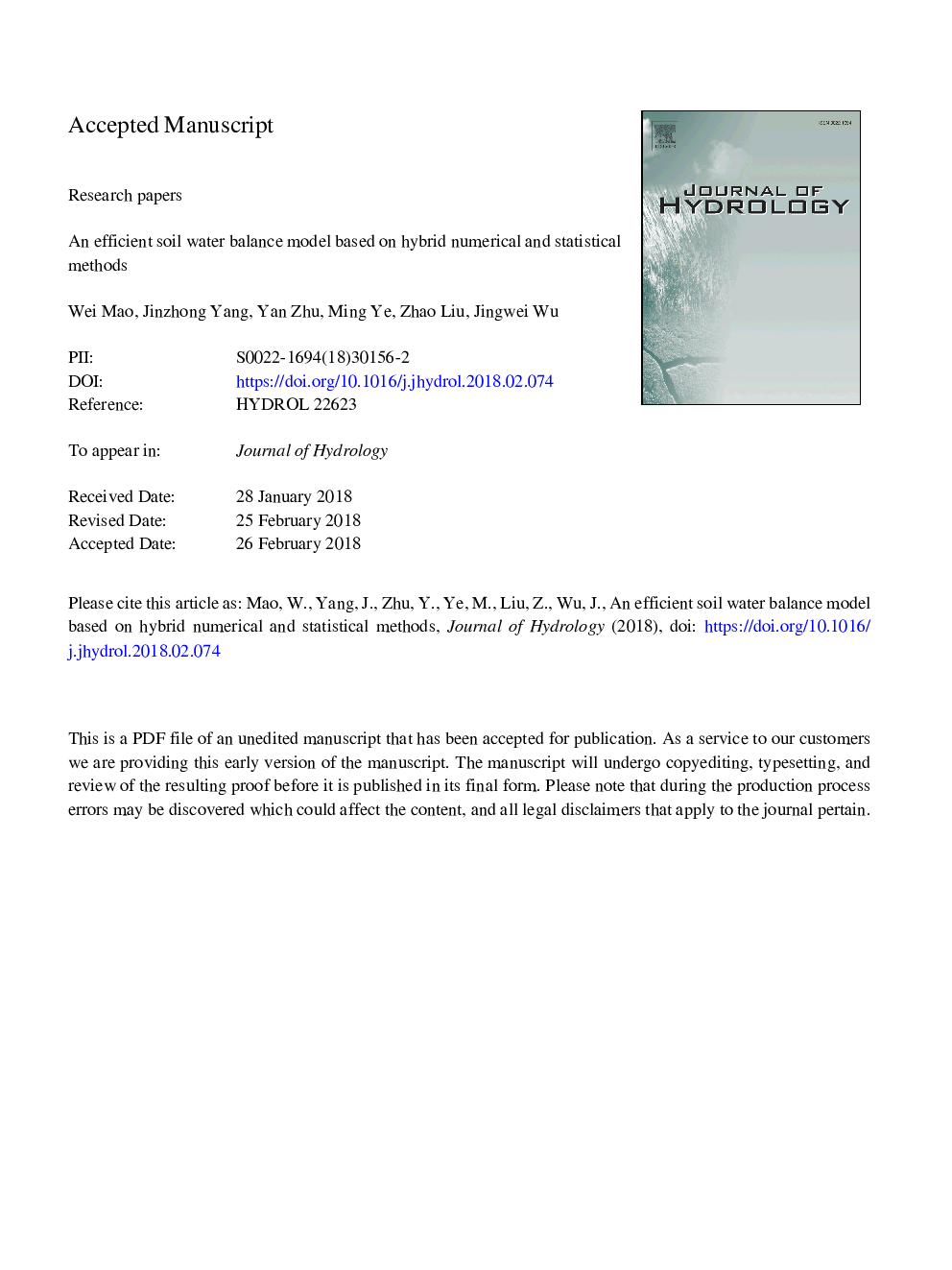| Article ID | Journal | Published Year | Pages | File Type |
|---|---|---|---|---|
| 8894937 | Journal of Hydrology | 2018 | 67 Pages |
Abstract
Most soil water balance models only consider downward soil water movement driven by gravitational potential, and thus cannot simulate upward soil water movement driven by evapotranspiration especially in agricultural areas. In addition, the models cannot be used for simulating soil water movement in heterogeneous soils, and usually require many empirical parameters. To resolve these problems, this study derives a new one-dimensional water balance model for simulating both downward and upward soil water movement in heterogeneous unsaturated zones. The new model is based on a hybrid of numerical and statistical methods, and only requires four physical parameters. The model uses three governing equations to consider three terms that impact soil water movement, including the advective term driven by gravitational potential, the source/sink term driven by external forces (e.g., evapotranspiration), and the diffusive term driven by matric potential. The three governing equations are solved separately by using the hybrid numerical and statistical methods (e.g., linear regression method) that consider soil heterogeneity. The four soil hydraulic parameters required by the new models are as follows: saturated hydraulic conductivity, saturated water content, field capacity, and residual water content. The strength and weakness of the new model are evaluated by using two published studies, three hypothetical examples and a real-world application. The evaluation is performed by comparing the simulation results of the new model with corresponding results presented in the published studies, obtained using HYDRUS-1D and observation data. The evaluation indicates that the new model is accurate and efficient for simulating upward soil water flow in heterogeneous soils with complex boundary conditions. The new model is used for evaluating different drainage functions, and the square drainage function and the power drainage function are recommended. Computational efficiency of the new model makes it particularly suitable for large-scale simulation of soil water movement, because the new model can be used with coarse discretization in space and time.
Related Topics
Physical Sciences and Engineering
Earth and Planetary Sciences
Earth-Surface Processes
Authors
Wei Mao, Jinzhong Yang, Yan Zhu, Ming Ye, Zhao Liu, Jingwei Wu,
